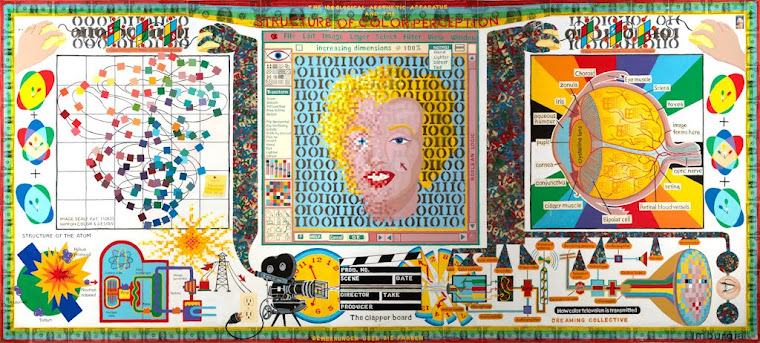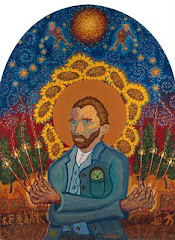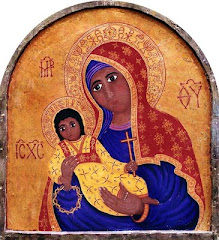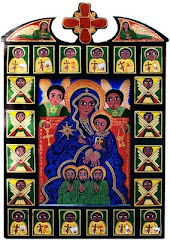
I found this dead bumble bee in my cardoon blossom! How did it come to die like this? Was it so overcome with the purple beauty of the late bloom and its desire for nectar that in it’s passion the bee’s tiny heart was pierced by one of the sharp spikes? Maybe that’s a pretty good way to die, but honey bees (and thus the world as we know it) are in peril, so it still seems sad to me. Dostoevsky wrote clever things like...‘beauty will save the world,‘ maybe he was right, but then he also wrote, “Beauty is mysterious as well as terrible. God and devil are fighting there, and the battlefield is the heart of man.” A lot happens in gardens that is beyond our explanations. They are sites of constant death, destruction, decay, competition; as well as rampant, unchecked fertility and an embarassing variety of unspeakable, insect and vegetable sexuality. Only by the most fascist-like discipline am I able to provisionally conquer, control and exploit this small 30x50 foot piece of ground into producing a meagre harvest for the barest needs of my own flesh. Never confuse vegetablism with peacefulness, every day in my garden is like the battle of Stalingrad, only our language makes it thus or otherwise. Bees are of a different sort though. I like to think of bees as if they were little angels sent to gather and share life’s potentiality and to set the whole machinery of life into motion. They are not responsible for how badly we muck the whole thing up, for that we usually blame the maker and the sender of the bees (and remember, bees like angels can be dangerous).
Elsewhere in Dostoevsky’s “Devils,” Terentiev asks Myshkin: "Is it true, prince, that you once said that beauty will save the world?" and then mockingly adds: "What kind of beauty will save the world....beauty is an enigma.” I hate to think of that bee dying for an enigma, I want to think that she gave up her life trying to bring even more abundant life into the world, trying to make the world flourish in both beauty and bounty. Of course, the bee doesn’t belong to us, or work for us, the world is made in such a way that the bee’s lifegiving beeness (beingness--if you will forgive the Heideggerian pun) is pure gift. People are the only ones who figured out how to turn the gift of life-giving beingness into something that is bought and sold, and that can transform life’s gifts into symbolic forms of exchange, and then into a kind of death (isn’t life hoarded just a kind a kind of anticipated death?). Death can be a gift too, of course, if one’s dying makes the world flourish (and when it does maybe that’s what we would call a ‘gospel?’ the gospel of the bees?). But if our forms of life diminish beingness then our death also diminishes death’s being and it becomes a dead loss, a nothingness, evil. In “The Gift of Death,” Derrida writes that death is, “...the gift made to me by God as he holds me in his gaze and in his hand while remaining inaccessible to me, the terribly dissymmetrical gift of the mysterium tremendum only allows me to respond and only rouses me to the responsibility it gives me by making a gift of death, giving the secret of death, a new experience of death.” And what is this secret of death, this ‘fearful mystery‘ that opens up a path to a new experience in death? The dying bee in the terrible/beautiful embrace of the flower knew what it was and she sang it into being. And although I wasn’t there to hear it I am blessed by the gift of her life. Obliged.
Oh, here is a recipe for cardoon:
3 c cream, 1 c chicken stock, 1 bay leaf, 3 lb cardoon, 1 c gruyere, grated. Put the cream, stock, and bay leaf in a large saucepan and season with salt and pepper.
Trim your cardoons, then slice them into pieces around 2 inches long. Heat the cardoons until the cream comes to a boil, then simmer over medium-low heat for about an hour. Remove the cardoon pieces with a slotted spoon, putting them into a gratin/casserole dish and continue to boil the cream until reduced to 3/4 c. Pour the cream over the cardoons, top with the gruyere, and bake at 350 until the top has colored a little bit, about 30 minutes. Serve warm.
Thank you bees.













No comments:
Post a Comment